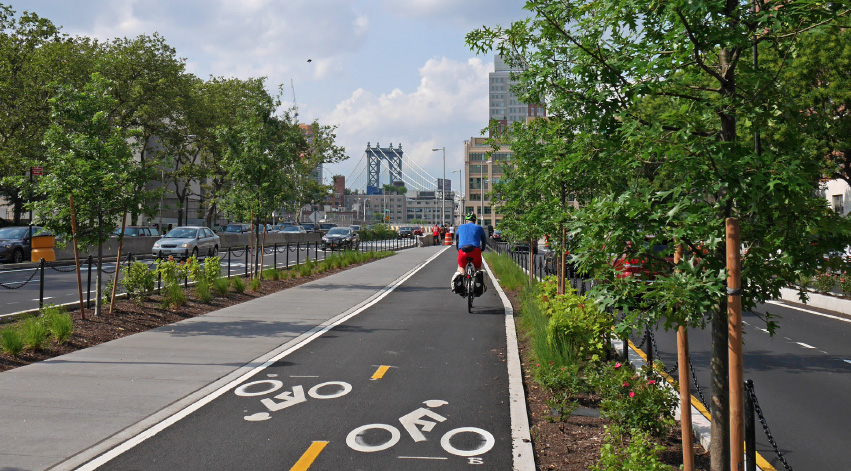Transportation Alternatives Spending Report Fiscal years 1992-2020
Executive Summary

The Transportation Alternatives Set-Aside (TASA) is the largest dedicated source of funding for trails, walking and biking in the United States. Since 1991, this program, formerly known as Transportation Enhancements (TE), has transformed the landscape of the country. Under the program, states have been able to make critical investments in building safe places to walk and bike. In part due to this dedicated funding, the United States now boasts more than 40,000 miles of multiuse trails, with communities reaping the long-known benefits. This infrastructure connects people to each other, creates economic vitality and promotes healthy outdoor mobility—saving money and decreasing roadway congestion, while reducing pollution and health care costs.1
Since the inception of dedicated Transportation Alternative (TA) programs, Rails-to-Trails Conservancy (RTC) has monitored how these funds have been invested and the projects that have been built. This annual Transportation Alternatives Spending Report is an important tool for advocates, states and the active transportation movement at large to understand and strengthen the program—improving the efficiency and impact of the investments made.
The 2020 report found that 95% of the TASA funds obligated to projects in the last seven years were used to fund trails, walking and biking. However, the national pipeline of potential projects needed to create connected active-transportation networks far exceeds the current level of funding and rate of obligation.
- Approximately 20% of the total fiscal year (FY) 2020 TA apportionment, or $152 million, was lost through transfers, largely to the Surface Transportation Program/Surface Transportation Block Grant program (STP/STBG) and the Highway Safety Improvement Program (HSIP), a trend that began under the Moving Ahead for Progress in the 21st Century Act (MAP-21) and continues under the Fixing America’s Surface Transportation (FAST) Act.
- Obligation rates dipped to 71% of apportioned funds or $546 million from $795 million the prior year as states were no longer under threat of having funds rescinded.
- Approximately 80% of TE/TA/TASA funds were reimbursed.
Legislative Loopholes Contribute to Funding Losses
Transportation Enhancements, the predecessor to Transportation Alternatives, became the first dedicated source of funding for walking and biking, but cuts and increased flexibility in successive programs have put this vital source of funding at risk.
When Congress passed the Intermodal Surface Transportation Efficiency Act of 1991 (ISTEA), the legislation brought together roads, railroads, transit and other modes of transportation— including walking and biking—under one umbrella. Most notably, it established funding for TE activities that included building rail-trails and other facilities for walking and biking, improving main streets left behind by the interstates, preserving transportation history and mitigating environmental impacts of transportation.
ISTEA was a critical development for trails, walking and biking; prior to the legislation, little federal investment was spent on walking and biking facilities. Using federal data, estimates indicate that from 1973 to 1991, a total of $40.7 million was spent on individual walking and biking projects that were not incidental to rebuilding a roadway. One year after ISTEA and the establishment of TE, $93.9 million was spent on the same types of projects.
Two decades after ISTEA was introduced, MAP-21 was signed into law with legislative language that increased the amount of funds that states were able to transfer to uses outside of the scope of Transportation Enhancements, now renamed Transportation Alternatives. This detrimental development was further solidified by the most recent FAST Act legislation. These two bills contained policy changes that allow states to transfer up to 50% of their TA funding available for use across the state to other Federal-aid Highway Program (FAHP) projects—doubling the percentage of transfers allowed under the preceding bills.
Since MAP-21 was implemented, states have transferred a cumulative $1.5 billion, or about one-third of the apportioned funds, out of TA via inter-program transfers in just seven years. Comparatively, only $192 million was transferred over the previous two decades (FY 1992–FY 2012). The bulk of this funding was transferred to the STP/STBG program and the HSIP to support on-road construction of roads, bridges and highways.
With states no longer under immediate threat of losing Department of Transportation funds to rescissions, FY 2020 also saw a significant decrease in the obligation rate of TA funds, from 103% in the prior fiscal year to 71%. While the rescission was ultimately repealed in 2019, states must continue to obligate funds at a higher rate to ensure TA Set-Aside funds are used to support the increased demand for safe places to walk and bike.
TA represents the single largest federal investment in trails, walking and biking and is among the smallest line items in surface transportation spending. The continued siphoning of funds away from the program in the face of unprecedented demand for trails, walking and biking, paired with a reduced overall TA authorization, and when compared to TE levels under SAFETEA-LU, has resulted in funding losses that can be debilitating to states’ and communities’ active transportation plans. This funding loss could encourage states to deprioritize the program, leaving unspent money on the table and discouraging additional federal funding.
1 Mary Ellen Koontz; Torsha Bhattacharya, Ph.D., Transportation Alternatives Spending Report Fiscal Years 1992–2020 (Washington, D.C.: Rails-to-Trails Conservancy, 2021)

About TrADE
The Transportation Alternatives Data Exchange (TrADE) is operated by Rails-to-Trails Conservancy. TrADE helps stakeholders at the federal, state and local levels understand and implement the Transportation Alternatives Set-Aside (TASA) program. TASA provides funding from the federal government for projects that expand travel choice, strengthen the local economy, improve quality of life and protect the environment. Eligible projects include most activities historically funded as “Transportation Enhancements,” the Recreational Trails Program and the Safe Routes to School program. TrADE provides transparency, promotes best practices, and provides citizens, professionals and policymakers with information and access to funding data.
From 1996 to 2013, TrADE operated as the National Transportation Enhancements Clearinghouse, as a partnership between Rails-to-Trails Conservancy and the Federal Highway Administration.
For more information, visit https://www.railstotrails.org/policy/trade/.
Acknowledgments
This report was written and produced by Mary Ellen Koontz and Torsha Bhattacharya, reviewed by Kevin Mills, edited by Amy Kapp and Sharon Congdon, and designed by Joe LaCroix. Data collection, and table and figure production, were undertaken by Luc Alvarado. The report was produced for the Transportation Alternatives Data Exchange (TrADE) at Rails-to-Trails Conservancy.
This publication would not be possible without the contributions of staff from state departments of transportation. The accuracy of the data they provide is crucial to the value of this report.

Donate
Everyone deserves access to safe ways to walk, bike, and be active outdoors.